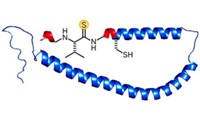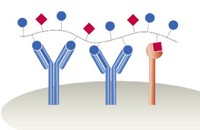Advertisement
Grab your lab coat. Let's get started
Welcome!
Welcome!
Create an account below to get 6 C&EN articles per month, receive newsletters and more - all free.
It seems this is your first time logging in online. Please enter the following information to continue.
As an ACS member you automatically get access to this site. All we need is few more details to create your reading experience.
Not you? Sign in with a different account.
Not you? Sign in with a different account.
ERROR 1
ERROR 1
ERROR 2
ERROR 2
ERROR 2
ERROR 2
ERROR 2
Password and Confirm password must match.
If you have an ACS member number, please enter it here so we can link this account to your membership. (optional)
ERROR 2
ACS values your privacy. By submitting your information, you are gaining access to C&EN and subscribing to our weekly newsletter. We use the information you provide to make your reading experience better, and we will never sell your data to third party members.
Synthesis
Antibody-Stilbene Interactions Illuminated
March 3, 2008
| A version of this story appeared in
Volume 86, Issue 9
When the antibody EP2-19G2 hooks up with the molecule trans-stilbene, the resulting complex produces a bright blue luminescence, a feature that has been exploited to create biosensors. Scientists had attributed the complex's blue light to stilbene fluorescence. A team led by Richard A. Lerner of the Scripps Research Institute has now shown that the blue emission comes from a charge-transfer-excited complex of an anionic stilbene and a cationic, parallel π-stacked tryptophan residue (Science 2008, 319, 1232). By mutating specific residues on the antibody, Lerner's team found that a tyrosine plays an essential role in forming this complex by pressing the stilbene against the tryptophan. They also found that the stilbene penetrates deeply into the antibody's ligand-binding pocket. This is in contrast to other, shallower binding antibody-stilbene complexes, which produce green or purple light from fluorescence. The researchers suggest that programming charge-recombination-induced luminescence into other antibody-chromophore complexes could lead to further biosensing applications.





Join the conversation
Contact the reporter
Submit a Letter to the Editor for publication
Engage with us on Twitter